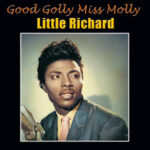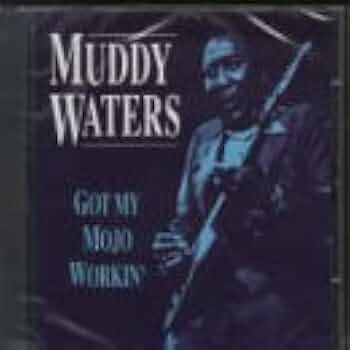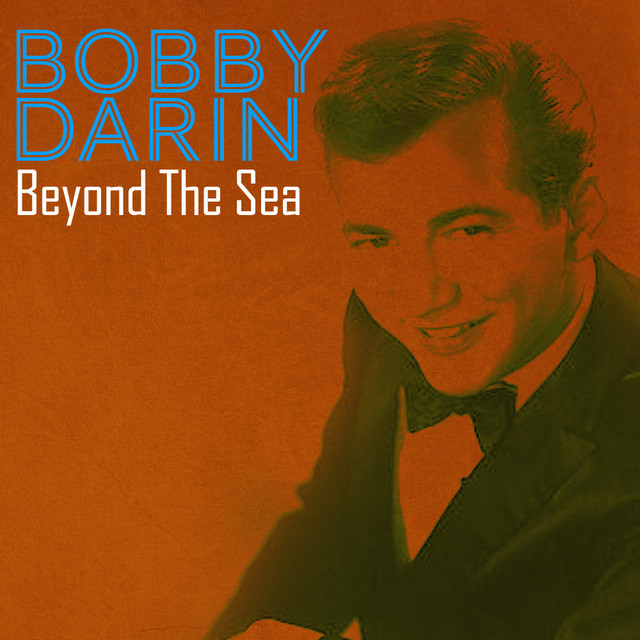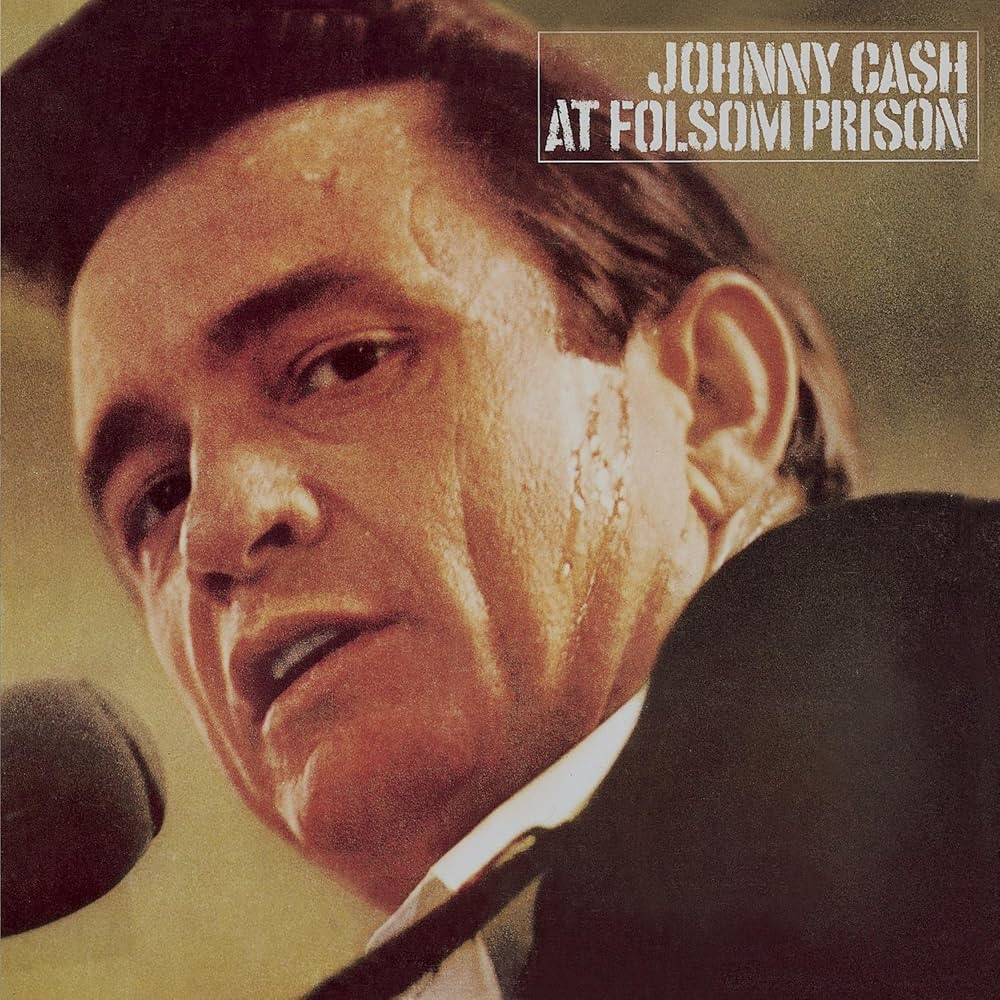 There are certain songs that don’t just play—they detonate. They burst out of the speakers like fireworks, shattering the calm, demanding attention, and changing the atmosphere of a room. Little Richard’s “Good Golly, Miss Molly” is one of those sonic explosions, a two-minute blast of pure rock ’n’ roll electricity that helped define an entire generation’s rebellion and joy. From its thunderous opening piano riff to Little Richard’s volcanic vocal delivery, the track stands as a blueprint for what unfiltered energy in popular music sounds like. It’s wild, sweaty, and timeless—an anthem that still makes you want to stomp your foot, throw your head back, and shout right along with him.
There are certain songs that don’t just play—they detonate. They burst out of the speakers like fireworks, shattering the calm, demanding attention, and changing the atmosphere of a room. Little Richard’s “Good Golly, Miss Molly” is one of those sonic explosions, a two-minute blast of pure rock ’n’ roll electricity that helped define an entire generation’s rebellion and joy. From its thunderous opening piano riff to Little Richard’s volcanic vocal delivery, the track stands as a blueprint for what unfiltered energy in popular music sounds like. It’s wild, sweaty, and timeless—an anthem that still makes you want to stomp your foot, throw your head back, and shout right along with him.
The Birth of Controlled Chaos
Recorded in 1956 and released in 1958, “Good Golly, Miss Molly” arrived at a time when rock ’n’ roll was still figuring out what it wanted to be. The genre was young, dangerous, and alive with possibility. Little Richard—born Richard Penniman—was already one of its brightest, most flamboyant stars thanks to hits like “Tutti Frutti” and “Long Tall Sally.” With “Good Golly, Miss Molly,” he perfected the formula he helped create: pounding piano, unrestrained vocals, and a rhythm section that felt like it could blow the roof off a club.
The track was written by John Marascalco and Robert “Bumps” Blackwell, both key collaborators in Little Richard’s early career. Blackwell also produced the song, capturing the manic, almost live-wire intensity that defined Richard’s performances. Recorded at J&M Studio in New Orleans—the same hallowed ground that birthed countless rhythm and blues classics—the song was infused with that city’s distinct musical flavor. You can feel the swamp heat in every beat, the jazz and gospel roots bubbling underneath the rock surface.
From the first piano lick, “Good Golly, Miss Molly” grabs you. It’s a riff that’s deceptively simple yet impossible to forget. Little Richard’s left hand pounds out a driving boogie-woogie bassline while his right hand dances across the keys with sharp, stabbing chords that sound like sparks flying. The band locks in instantly—Earl Palmer’s drums snap with a swing that borders on unhinged, while Lee Allen’s tenor saxophone punches through with that unmistakable New Orleans horn sound. It’s chaos, but it’s tight chaos. Every note sounds on the edge of explosion but never loses control.
A Voice Like Lightning
Then there’s that voice. Little Richard doesn’t just sing “Good Golly, Miss Molly”—he inhabits it. His vocal performance is one of the most iconic in rock history, a masterclass in power, grit, and personality. He shouts, wails, and growls his way through the track, blurring the line between singing and screaming. It’s not just about pitch or melody—it’s about energy. Every word feels like it’s being ripped out of his chest.
The opening line—“Good golly, Miss Molly, sure like to ball!”—was scandalous for its time. In 1958, “to ball” wasn’t about basketball; it was a slang term for partying, dancing, and, yes, sexual liberation. Little Richard’s delivery leaves no doubt about what kind of good time Miss Molly’s having. The lyric might sound tame now, but at the time it was a shot across the bow of conservative 1950s America. It was exuberant, suggestive, and full of life—exactly the kind of youthful rebellion parents feared and teenagers craved.
Little Richard’s vocal phrasing is relentless. He doesn’t take his foot off the gas once, and the song barely gives him—or the listener—a chance to breathe. His screams, those spine-tingling “wooo!”s, became a Little Richard trademark and later influenced everyone from Paul McCartney to Robert Plant. You can hear the DNA of “Good Golly, Miss Molly” in The Beatles, The Rolling Stones, Led Zeppelin, and virtually every rock band that ever tried to capture that raw spark of rebellion.
A Celebration of Liberation
Beyond the musical fireworks, “Good Golly, Miss Molly” is a celebration of freedom—of movement, of sound, of self-expression. Rock ’n’ roll in its infancy was never just about rhythm or melody; it was about attitude. Little Richard embodied that attitude with every ounce of his being. He blurred the lines between sacred and profane, between black gospel roots and white pop sensibilities, between masculinity and flamboyance.
His performance style—wild pompadour, glittering clothes, and gender-bending charisma—challenged racial and sexual norms at a time when America was rigidly segregated and morally conservative. “Good Golly, Miss Molly” was more than just a party song; it was a cultural statement disguised as one. It said: We’re here. We’re loud. We’re having fun. And you can’t stop us.
This track’s ecstatic energy was contagious. Radio stations across the country couldn’t resist it, even when they tried to sanitize it. Covers popped up quickly—most famously by Mitch Ryder & The Detroit Wheels in 1966—but none could match the original’s manic fire. Little Richard’s version remains definitive because it isn’t polished or restrained. It’s alive.
The Musical Architecture of a Classic
At just over two minutes, “Good Golly, Miss Molly” wastes no time. The song’s structure is as straightforward as it gets: intro, verse, chorus, verse, chorus, sax solo, chorus, fade-out. But within that simplicity lies perfection. Every element is honed for maximum impact.
The intro is iconic—a piano-led rocket blast that sets the tone instantly. The verses roll with infectious rhythm, and each chorus feels like a euphoric release. Lee Allen’s saxophone solo midway through is a moment of pure ecstasy, the kind of solo that practically drips with sweat. It’s rough, honking, and bluesy—just like the rest of the track.
The production, handled by Blackwell, strikes a balance between clarity and grit. It’s not hi-fi by modern standards, but that’s part of its charm. The slightly distorted sound gives the record its heat, as if the microphones themselves could barely contain the band’s intensity. You can almost see the sweat on the studio walls.
From New Orleans to the World
“Good Golly, Miss Molly” may have been recorded in New Orleans, but its reach was global. When it hit the airwaves in 1958, it climbed the charts on both sides of the Atlantic, peaking at number 10 on the Billboard Hot 100 and number 4 on the R&B chart. For many listeners, this was their introduction to Little Richard’s hurricane-force sound.
The song also became one of the foundational tracks of early rock and roll, influencing the trajectory of pop, soul, and rhythm and blues for decades to come. It’s no exaggeration to say that without songs like “Good Golly, Miss Molly,” rock music as we know it wouldn’t exist. The Beatles covered Little Richard songs in their early sets, The Rolling Stones borrowed his swagger, and Jimi Hendrix—who briefly played in Little Richard’s band—absorbed his stagecraft and showmanship.
The Eternal Flame of Little Richard
“Good Golly, Miss Molly” wasn’t just a hit; it was a declaration. For Little Richard, it cemented his reputation as one of the architects of rock and roll. He didn’t just open doors—he blew them off their hinges. His combination of gospel fervor, rhythm-and-blues groove, and sexual exuberance was revolutionary.
And yet, as bold as the song was, it also represented the contradictions of its creator. Little Richard, a devoutly religious man, often struggled with the tension between his faith and his fame. He famously retired from rock and roll multiple times, returning to the church, only to be drawn back to the stage again and again. That push-and-pull between sacred and secular gives “Good Golly, Miss Molly” an extra layer of complexity—it’s the sound of a man simultaneously channeling divine spirit and human desire.
Over the years, the song’s title became shorthand for the entire early rock ’n’ roll aesthetic: loud, fast, and full of life. Its influence can be heard in everything from the garage rock of the 1960s to the punk movement of the 1970s. Even today, when you hear a new band crank up the distortion and shout a hook with reckless abandon, there’s a little bit of “Good Golly, Miss Molly” in their DNA.
Covers, Legacy, and Cultural Afterlife
Mitch Ryder’s 1966 version gave the song a fresh jolt of Detroit muscle, turning it into a high-octane blue-eyed soul hit. Creedence Clearwater Revival later recorded it for their 1969 album Bayou Country, bringing it back to its swampy roots. But every version is just a reflection of Little Richard’s original—the sun to which all covers orbit.
“Good Golly, Miss Molly” has since been featured in countless movies, TV shows, and commercials. It’s appeared in films like Predator, Christine, and Planes, Trains and Automobiles, often used to signal unrestrained fun or nostalgic chaos. Whenever Hollywood needs to evoke the wild spirit of early rock and roll, this is one of the first songs they turn to.
It’s also become a symbol of unfiltered expression. In an era where so much popular music is digitally smoothed and perfectly produced, “Good Golly, Miss Molly” reminds us of the power of imperfection—the beauty of a human voice that cracks, screams, and sweats. It’s a reminder that rock and roll wasn’t born in boardrooms or algorithms—it was born in juke joints, churches, and back-alley studios filled with grit and soul.
The Song’s Eternal Spark
Listening to “Good Golly, Miss Molly” today still feels like mainlining adrenaline. That’s the mark of a true classic: its ability to transcend time. You don’t have to have lived through the 1950s to feel its power. It’s universal. The rhythm still makes bodies move. The vocals still make speakers shake. And that piano still feels like a fuse being lit.
Little Richard passed away in 2020, but his spirit is indestructible, embedded in every shout, riff, and drum hit of this record. “Good Golly, Miss Molly” remains one of his most recognizable songs, a calling card for the man who changed the world with nothing but a microphone, a piano, and raw, unstoppable charisma.
Conclusion: A Two-Minute Revolution
“Good Golly, Miss Molly” isn’t just a song—it’s a cultural milestone, a time capsule of the moment rock and roll truly found its voice. It captures everything that made Little Richard one of the greatest performers of all time: the swagger, the speed, the sanctified chaos. It’s the sound of liberation in motion, bursting from the constraints of its era and echoing across generations.
At just over two minutes long, it’s short, sharp, and unstoppable—like a lightning strike that never fades. Every time that piano riff kicks in, it feels brand new again, like the first spark of rebellion catching fire. That’s the magic of Little Richard. That’s the magic of “Good Golly, Miss Molly.”


